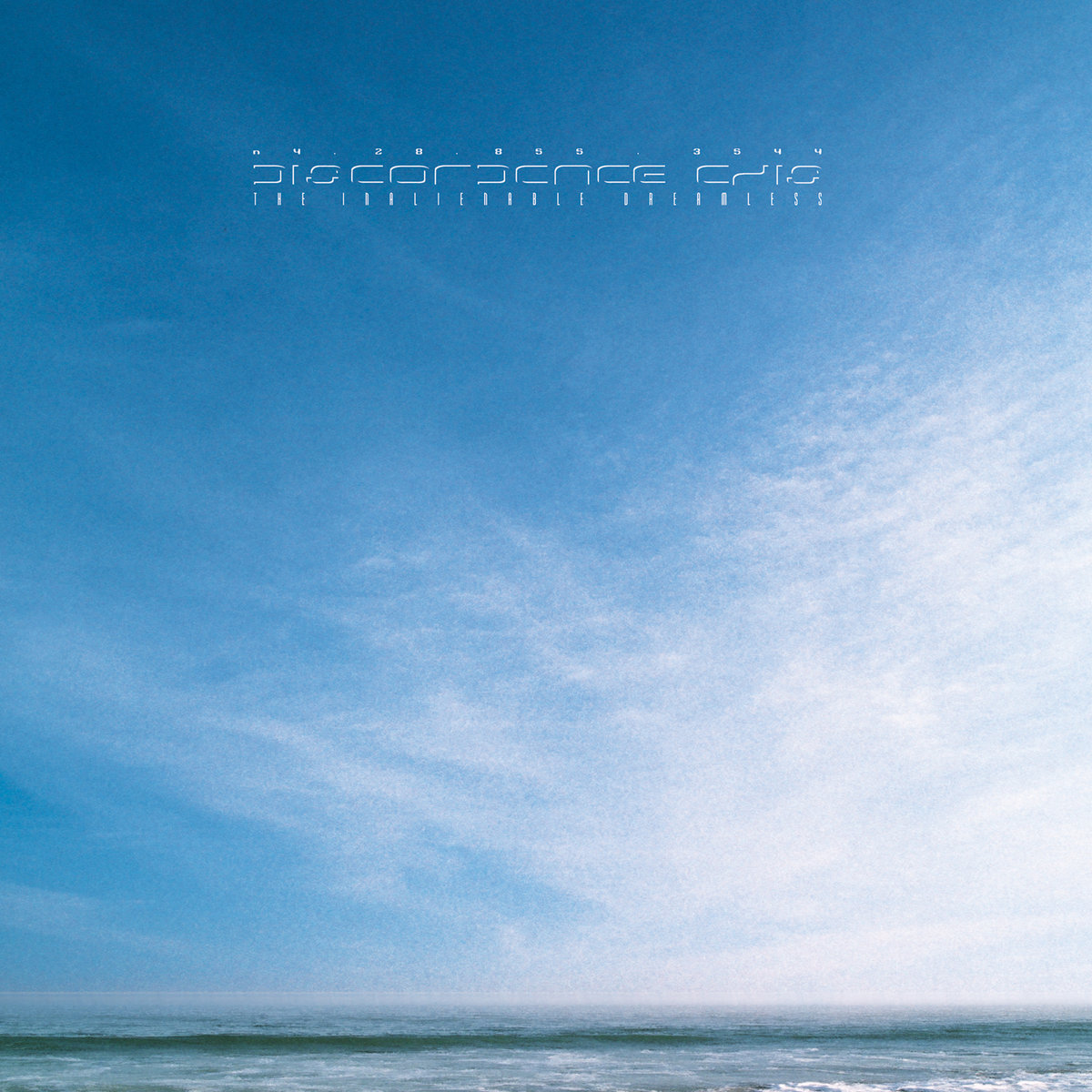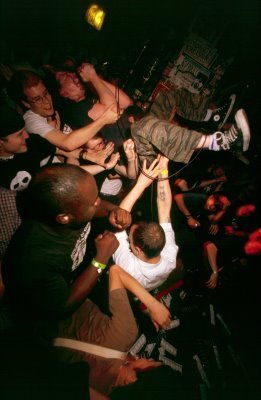
The first time I ever listened to Discordance Axis’ third LP The Inalienable Dreamless I was like Eutychus. Not that I fell asleep due to how long and drawn-out it was (its total run time is twenty-three minutes), but like that young man I too awoke from a plummet into a different world.
It’s like a window I couldn’t see before suddenly opened and I fell headlong through another dimension and crashed into solid ground beneath where I began. Though it slew me, it also breathed life into stale lungs. Much of the extreme music I was listening to at the time espoused certain ideals but had emptied the liquid in which those ideals were suspended, drying me out and leaving those values formless and desiccated. The Inalienable Dreamless changed all of that.
Twenty years old this month, this record revolutionized grindcore. But like the Velvet Underground, its influence has been largely posthumous, traceable to bands listening to bands who defragged and upgraded after listening to The Inalienable Dreamless. It was a genuine cult classic, one of those records the rumor of which whispers out of huddles of the initiated, sending you after its scent, looming over your music purchases once you’ve heard of it, once you’ve heard it cited as the progenitor of things more recent.

The album’s cover belies what awaits the listener. A thin seascape horizon set beneath a wide open blue sky bordered by clean, white cirrus. The back has no portentous song titles, only two lines of text set within that same sky: “I will live forever. Alone.”
And then the plunge.
Rob Marton’s guitar work on The Inalienable Dreamless was simply unlike anything else on offer in the world of grindcore, a genre typified by waves of distorted guitar roaring around the serrated edges of relentless blast beats and harsh, barked vocals. Discordance Axis had already pioneered the use of noise as a foundation for grind, funneling eerie washes of dissonance over punishing drums in their last album, Jouhou. It’s not that noise was abandoned on this record, though, so much as it was reframed within unexpectedly intricate, lyrical riffing.
There’s a technicality that sets it apart from the chum spewing out of the Napalm Death cloning facilities of that era but also a heart wrenching melodic quality that collides with Jon Chang’s screams (who sounds like a man unsuccessfully trying to stave off demonic possession) to carve out labyrinths of glittering pain. The grind of The Inalienable Dreamless is no anesthetic: it’s a shot of adrenaline wrenching the listener back to life, out of the pocket of nothingness we’re inclined to tuck ourselves within to hide from the hardship of life.
There is no high fantasy in this record’s soundscape, only the very real, very grim battle of the individual surrounded by the myriad disillusionments, failures, and revocations of friendship, love, solace, and support that typify our experience of the disenchanted modern world. The record circulates around the desire for rebirth, its inevitable disappointment, and the just-as-inevitable return of the desire. The music emulates this asymptotic pull towards wholeness and the cyclical scraping back and forth we recognize as the sonic analogue of our own trying and failing and trying and failing.

The layering of metaphor in Chang’s lyrics evokes unmistakeable moods of alienation and dread but insinuates vestiges of delicacy and beauty like the origami pieces hermeneutically unfolding in Blade Runner’s plot. It doesn’t matter if we can’t isolate what event provoked this or that lyric. They aren’t vague or general: they’re mythically precise, fitted onto the contours of our contemporary dystopia.
“Choreographed into the desire for rebirth / Or just a wish for death,” he screams on the record’s title track. In “The Third Children” Chang bellows at the agony of what feels like that wish’s involution: “Cannot stop / Reverse rebirth / Always pain / In my heart.” The guitars arpeggiate dissonantly against an open string, struggling to reach consonance but never crossing that threshold. Out of the wreckage of that arpeggio it reawakens, racing towards the end in a thrash-infused sprint over suspended chords, determined to hold their own against atonality.
“Jigsaw,” though situated in the record’s final run, is its heart, as it is here that Marton’s guitars marry majesty to frightened, fractured rhythmic convulsions and in its bridge section, for a few glorious moments, retracts the pieces to which the title refers to reveal a single, determined melody staving off total collapse. It’s a shockingly tender moment amidst the carpet-bombing elsewhere in the album. This passage captures the grace-tinctured arduousness of survival, the inalienable tendency of the human ache to be. When the blasts return we still hear that insistent melody within the cacophony and ride the wave forward, prepared to smash through the roadblocks and shield walls of the life-denying powers.
Progression in technique and sophistication in aesthetic can make a record a milestone in the history of a genre but won’t in themselves guarantee an ongoing fandom. But this record unites its musical intricacy and production values to an inchoate bellow in the human soul that’s been waiting for this moment for the proper media so as to be uttered at last. It’s the sound of our refusal to be devoured, as painful and as tiring as the battle will be.
The album as a whole dignifies our flailing efforts to keep alive, its onslaught evoking the existential avalanche threatening to engulf us. The paradoxical beauty of this record — its ugly beauty — reflects the dark radiance of the grace that penetrates our lives and sets them in motion to resist meaninglessness. The aggression and forward motion of this record highlights how the passivity in which we receive grace doesn’t give rise to passivity on the ground of the world we live within each day.

When we feel like we’re in free fall it’s easy to treat our interlaced traumas like safety nets to catch us. But they won’t hold the “I” of who we are: they’ll eat that away until only the trauma is left. The way out is through the darkness, taking the leaden stride to nowhere and finding ourselves alive and restored on the other side. Perhaps grindcore isn’t the Paul you need at your side to revive you, but it isn’t impossible. The Inalienable Dreamless has withstood two decades of testing and still sounds as fresh today as it did in August of 2000. May it lead you through that same window and bolster you to live.

COMMENTS
2 responses to “The Dark Radiance of Discordance Axis’ The Inalienable Dreamless Twenty Years Later”
Leave a Reply













That ironic juxtaposition between between hardcore and melodic implications is a unique tendency in this and related genres. Definitely evokes something transcendent and sentimental. Wonder if there’s any grace to be found in a band like The Coalesce, haha
Couldn’t agree more, JT— something about that juxtaposition grips my heart in a unique way. And I intend to discover whether there is or isn’t in Coalesce!